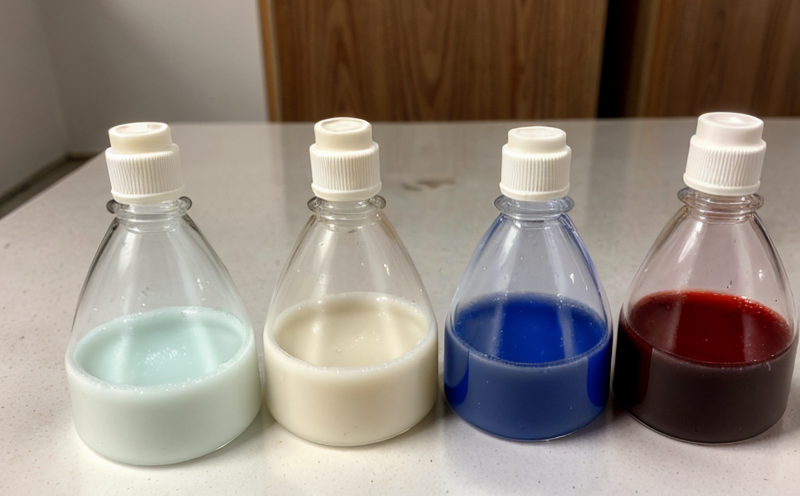ISO 22655 Oligomer Content Testing in Plastics
The ISO 22655 standard provides a comprehensive framework for determining the oligomer content in plastics, particularly those used in medical devices and consumer products. This testing is crucial as it helps ensure product safety, compliance with regulatory requirements, and the overall integrity of materials.
Understanding oligomers involves recognizing their role in enhancing plastic properties such as flexibility, durability, and processability. However, high levels of oligomer content can lead to issues like reduced mechanical strength and potential health hazards if not properly managed. ISO 22655 addresses these challenges by offering a standardized method for quantifying the amount of oligomers present.
The testing procedure outlined in ISO 22655 involves several critical steps, including sample preparation, extraction of oligomers, and analysis using advanced analytical techniques such as gas chromatography or liquid chromatography. This ensures accurate measurement and reliable results that can be trusted for decision-making processes within industries.
For quality managers and compliance officers, this service is essential in maintaining product safety standards and adhering to regulatory guidelines set forth by organizations like the FDA and EU directives. R&D engineers benefit from precise measurements as they strive to improve material formulations without compromising safety or performance.
The importance of ISO 22655 cannot be overstated, especially given its wide applicability across various sectors including healthcare, consumer goods, automotive manufacturing, and packaging industries. By ensuring compliance with international standards, laboratories like ours contribute significantly to the trustworthiness of products reaching end consumers.
To achieve accurate results, it is important to follow proper specimen preparation procedures as outlined in ISO 22655. This includes thorough cleaning, drying, and crushing of samples if necessary before analysis. Additionally, understanding the specific requirements for each type of plastic being tested ensures consistent and reliable outcomes.
The standard also emphasizes the use of appropriate extraction solvents and conditions to effectively isolate oligomers from other components within the polymer matrix. This step is crucial because it directly impacts the accuracy of subsequent analyses performed on extracted samples.
Why It Matters
The importance of ISO 22655 lies in its ability to provide accurate measurements of oligomer content, which is vital for ensuring product safety and compliance with regulatory requirements. In the context of medical devices and consumer products made from plastics, even small variations in oligomer levels can have significant impacts on performance and potential health risks.
For quality managers and compliance officers, this service ensures that manufacturers adhere to strict standards set by regulatory bodies such as the FDA or EU directives. Non-compliance could result in recalls, fines, and damage to brand reputation – all of which are best avoided through rigorous adherence to international standards like ISO 22655.
R&D engineers also stand to gain from precise measurements provided by this service because it allows them to fine-tune material formulations while maintaining safety standards. This ensures that improvements in product quality do not come at the expense of consumer health or environmental impact.
In addition, compliance with ISO 22655 can open up new market opportunities for companies operating internationally since many countries recognize and enforce these global standards. For procurement teams looking to source reliable suppliers who meet high-quality benchmarks, this service offers peace of mind knowing that every batch undergoes thorough testing according to recognized international protocols.
Overall, ISO 22655 Oligomer Content Testing in Plastics is more than just a technical procedure; it represents an investment in the long-term success and reputation of any organization involved in producing or sourcing plastic-based materials for consumer use. By embracing this standard, businesses can demonstrate their commitment to excellence while staying ahead of evolving industry trends.
Applied Standards
| Standard | Description |
|---|---|
| ISO 22655 | This international standard provides guidelines for determining the oligomer content in plastics, particularly those used in medical devices and consumer products. |
| ASTM D7613 | An American Society for Testing and Materials (ASTM) standard that offers additional methods for analyzing oligomers extracted from polymer samples. |
| EN 12485 | This European Norm specifies requirements for the determination of oligomer content in polyolefins, which are widely used in various industries including automotive manufacturing and packaging. |
International Acceptance and Recognition
The ISO 22655 standard has gained widespread acceptance across numerous countries worldwide, reflecting its relevance in ensuring product safety and quality. Many global markets have adopted this standard as a benchmark for evaluating plastic materials used in medical devices, consumer goods, automotive manufacturing, and packaging.
Regulatory bodies such as the FDA (United States) and EMA (European Medicines Agency) often reference ISO 22655 when setting guidelines for manufacturers. Compliance with this international standard not only ensures that products meet stringent quality controls but also facilitates easier trade between nations by aligning local regulations with global expectations.
Companies seeking to expand their business internationally would do well to adopt ISO 22655 as part of their compliance strategy. By doing so, they can demonstrate their commitment to maintaining high standards and contribute positively towards the overall safety and reliability of products entering international markets.
In summary, the recognition and acceptance of ISO 22655 underscore its significance in promoting consistent quality across different regions while supporting efforts aimed at improving public health and protecting consumers from potential risks associated with improperly manufactured plastic items.





